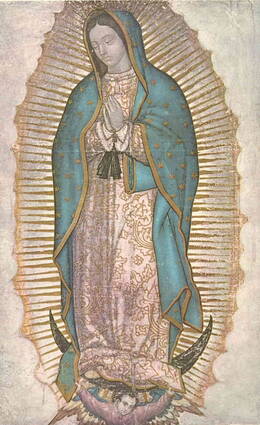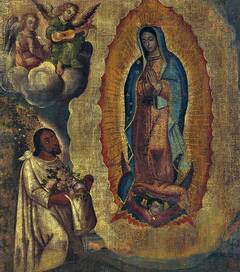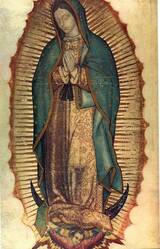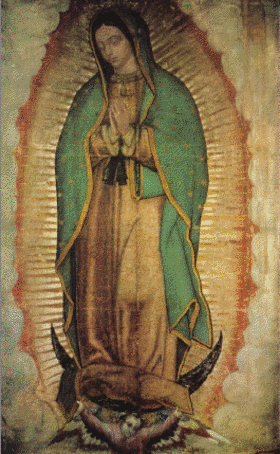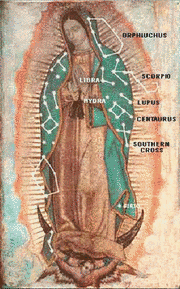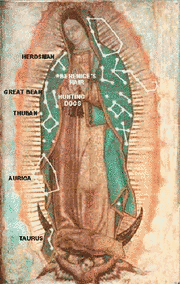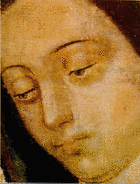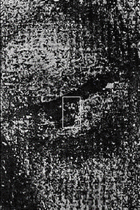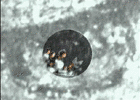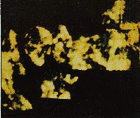Our Lady of Guadalupe
Patroness of the New Evangelization, Patroness of the Unborn & Patroness of the Americas
Blessed John Paul II's 1st pilgrimage abroad as Pope was to Our Lady of Guadalupe in January 1979; he next visited her in 1990 for Juan Diego's beatification, then again in 1999 & finally in 2002 for Juan Diego's canonization.
Shrine - Basilica of Our Lady of Guadalupe, Tepeyac Hill, Mexico City
Feast day of Our Lady of Guadalupe - 12 December
Feast day of St Juan Diego Cuauhtlatoatzin - 9 December
3 2us de la Virgen de Guadalupe con Padre José Manuel Torres Origel ♦
3 2us by Father Emmanuel Mansford CFR: "Over the years literally millions of Mexican Indians were converted because the image is such that Our Lady is clothed with the stars, behind her is the sun & she is standing on the moon, & so the Indians, who worshipped these pagan gods of the sun, the moon & the stars, knew that she was more powerful than them because she stood on the moon, she was in front of the sun & she was clothed in the stars. But they also knew that she wasn't God because her head was bowed & her hands were joined in prayer, & they saw that round her waist was this sash that meant that she was pregnant & right over her womb was this flower in the shape of a star which was a sign to them of the one true God." ♦
- Flash is required!
Steven, from the United States.: "I know that what I experienced was the divine love of the Blessed Mother and that the feelings I felt that day were just a drop of what was part of a larger river but that drop was enough to transcend all the joy and peace I had ever felt in my life and in a moment I knew what my heart had been created for." ♦
The story of Our Lady's apparitions to Juan Diego Cuauhtlatoatzin
In Mexico in 1531, God permitted Our Lady to appear to a recently converted Aztec Indian named Juan Diego. To him was given arguably the greatest treasure in the church - the tilma of Our Lady of Guadalupe, a true image of Mary the Mother of Jesus, when she was with child.
When Juan Diego first saw the Blessed Mother, he was a 57 year old widower and she seemed to him to be about 18. She appeared to him 4 times, and once to his uncle Juan Bernadino, who was cured of his sickness. When first Juan saw her it was at the foot of the Tepeyac Hill (in what is now Mexico City). She was in a brilliant light, and called to him softly. She told him that she was the ever Virgin, Holy Mary, Mother of the True God who is the Author of Life, the Creator of all things, the Lord of Heaven and Earth, present everywhere. Her purpose in coming was to ask Juan Diego to tell the bishop that she wished a sanctuary to be erected in that place where she would be honoured.
"Here I will show myself as a loving Mother to you and to all those born in these lands, and to all those who love me and trust in me, for I am your loving mother."
When the Spanish bishop asked for a sign to prove Juan Diego's story, Our Lady gave Castille roses, which she herself arranged in the Indian's cloak or 'tilma', telling Juan to show them to no-one but the bishop. When he did so, the roses cascaded forth, revealing on the tilma a miraculous image of Our Lady as she had shown herself to Juan Diego.
Scientists from the NASA Research Centre have carried out extensive tests on the fabric and image and have discovered no scientific explanation, since the picture is neither painted, dyed or woven. It is made from the fibres of the maguey cactus and it has not been treated with sizing, a fabric of which the ordinary life span is 20 years. Enlargements were made and it was discovered that the reflection of the bishop looking in astonishment could clearly be seen in the pupil of Our Lady's eyes (more information below). This hidden miracle has been kept for the 20th century, an age where there is so little faith.
The name Guadalupe comes from an ancient shrine of Our Lady in Spain. The bishop was unable to understand the Indian name of Tecoatlexpeuh, which means "she who crushes the head of the serpent", and thought it sounded like 'de Guadalupe', by which name it has been known ever since. Within 7 years of the apparitions, 9,000,000 Indians had converted to Christianity from their pagan Aztec religion. It is the greatest outpouring of the Holy Spirit in the history of the Church.
To the Indians the picture told the great truths of Christianity. Mary is robed with the sun and is standing on the moon. The Aztecs offered human sacrifices on a massive scale so as 'to keep the natural order in creation'. She is wearing the dress of an Aztec princess, and the black sash at her waist indicates that she is pregnant. When the image was crowned by the Papal Envoy on 12th December 1981, to celebrate the 450th anniversary of the feast of the roses, a great light shone forth from her womb over the whole congregation in the Basilica. This miracle lasted for 20 minutes, could be seen by all present, and was visible even on television. Our Lady is supported by her Guardian Angel, Saint Michael. Together they brought to an end the practice of human sacrifice by the Aztecs, and together, by the power of God, they will bring to an end the killing by abortion of unborn babies in our own times.
The figure of Our Lady is 4'11" high. It is unutterably beautiful and deeply compelling. Her hands are joined in prayer. Our Lady of Guadalupe is silent and humble, but her words to Juan Diego are a comfort for us all:
"Know for certain that I am the perfect and perpetual Virgin Mary, Mother of the True God ... here I will show and offer all my love, my compassion and protection to the people. I am your merciful Mother, the Mother of all who love me, of those who cry to me, of those who have confidence in me. Here I will hear their weeping and their sorrows .. their necessities and misfortunes. Listen and let it penetrate your heart.
Do not be troubled or weighed down with grief. Do not fear any illness or vexation, anxiety or pain. Am I not here who am your Mother? Are you not under my shadow and my protection? Am I not your fountain of life? Are you not in the fold of my mantle? In the crossing of my arms? Is there anything else you need?"
La oración del Beato Juan Pablo II a Nuestra Señora de Guadalupe
25 de enero 1979 - in French, Portuguese & Spanish
"¡Oh Virgen Inmaculada
Madre del verdadero Dios y Madre de la Iglesia!
Tú, que desde este lugar manifiestas tu clemencia y tu compasión
a todos los que solicitan tu amparo;
escucha la oración que con filial confianza te dirigimos,
y preséntala ante tu Hijo Jesús, único Redentor nuestro.
Madre de misericordia,
Maestra del sacrificio escondido y silencioso,
a Ti, que sales al encuentro de nosotros, los pecadores,
te consagramos en este día todo nuestro ser y todo nuestro amor.
Te consagramos también nuestra vida, nuestros trabajos, nuestras alegrías, nuestras enfermedades y nuestros dolores.
Da la paz, la justicia y la prosperidad a nuestros pueblos;
ya que todo lo que tenemos y somos lo ponernos bajo tu cuidado, Señora y Madre nuestra.
Queremos ser totalmente tuyos y recorrer contigo el camino de una plena fidelidad a Jesucristo en su Iglesia:
no nos sueltes de tu mano amorosa.
Virgen de Guadalupe, Madre de las Américas,
te pedimos por todos los obispos, para que conduzcan a los fieles por senderos
de intensa vida cristiana, de amor y de humilde servicio a Dios y a las almas.
Contempla esta inmensa mies, e intercede para que el Señor infunda hambre de santidad en todo el Pueblo de Dios, y otorgue abundantes vocaciones de sacerdotes y religiosos, fuertes en la fe y celosos dispensadores de los misterios de Dios.
Concede a nuestros hogares la gracia de amar y de respetar la vida que comienza.
con el mismo amor con el que concebiste en tu seno la vida del Hijo de Dios.
Virgen Santa María, Madre del Amor Hermoso, protege a nuestras familias,
para que estén siempre muy unidas, y bendice la educación de nuestros hijos.
Esperanza nuestra, míranos con compasión, enséñanos a ir continuamente a Jesús y, si caemos, ayúdanos a levantarnos, a volver a El, mediante la confesión de nuestras culpas y pecados
en el sacramento de la penitencia, que trae sosiego al alma.
Te suplicamos que nos concedas un amor muy grande a todos los santos sacramentos que son como las huellas que tu Hijo nos dejó en la tierra.
Así, Madre Santísima, con la paz de Dios en la conciencia, con nuestros corazones libres de mal y de odios, podremos llevar a todos la verdadera alegría y la verdadera paz,
que vienen de tu Hijo, nuestro Señor Jesucristo, que con Dios Padre y con el Espíritu Santo,
vive v reina por los siglos de los siglos. Amén."
Discoveries about the tilma of the Virgin of Guadalupe
Empress of America
What science has discovered about the tilma of the Virgin of Guadalupe:
1. Ophthalmalgic studies made on the eyes of Mary detected that when the eye is exposed to light, the retina contracts, and when the light is withdrawn, it returns to a dilated state, just as happens with a living eye.
2. The temperature of Juan Diego's tilma, made of a material that comes from fibers of the maguey cactus, maintains a constant temperature of 98.6 degrees, the same as that of a living human body.
3. One of the doctors who analyzed the tilma placed his stethoscope below the black band at Mary's waist, and heard rhythmic beats at 115 pulses per minute, the same as that of a baby in the maternal womb.
4. No sign of paint has been discovered on the tilma. From a distance of 3-4 inches from the image, one can see only the maguey cactus fibers of the material: the colors disappear. Scientific studies have not been able to discover the origin of the coloration, nor the way the image was painted. They cannot detect vestiges of brush strokes or any other known painting technique. NASA scientists confirm that the paint material does not belong to any known element on earth.
5. When the material was examined under a laser ray, it was shown that there is no colouration on the front or the back of the cloth, and that the colours hover at a distance of 3/10th of a millimeter (1/100th of an inch) over the cloth, without touching it. The colours actually float above the surface of the tilma.
6. The rough material of the tilma has a lifespan of no more than 20-30 years. Several centuries ago, a replica of the image was painted on an identical piece of maguey cloth and it disintegrated after several decades. Nonetheless, during the almost 500 years of the miracle, the cloth with the image of Mary remains as strong as it was on the first day. Science cannot explain why the material has not disintegrated.
7. In the year 1791, muriatic acid accidentally spilled on the upper right side of the tilma. During the period of 30 days, without any special treatment, the affected fabric re-constituted itself miraculously.
8. The stars that appear on the mantle of Mary reflect the exact configuration of positions that could be seen in the sky of Mexico on the day the miracle happened.
On the right side of the Virgin's mantle, the southern constellations are indicated:
At the top are 4 stars that form part of the Orphiuchus constellation.
Below it to the left, we find Libra, and to its right, at what seems an arrow point, is the beginning of Scorpio.
In the middle are the constellations of Lupus and, to its left, an end point of Hydra.
Further down, we can clearly see the Southern Cross: above it appears the slightly inclined square of the Centaurus constellation.
On the left side of the Virgin's mantle we see the northern constellations:
At her shoulder, a fragment of the stars of the Herdsmanconstellation; below it and to the left is the Great Bear. To its right is Berenice's Hair; below it, Hunting Dogs, and to its left, the Thuban, which is the brightest star of the Draco constellation.
Below the 2 parallel stars (which still form part of the Big Bear) we find stars from another pair of constellations: the Auriga and, at the bottom, 3 stars of Taurus.
Thus, in their totality and proper places, the 46 most brilliant stars that can be seen on the horizon of the Valley of Mexico are identified.
9. In the year 1921, a man concealed a high power bomb in a flower arrangement and placed it at the feet of the tilma. The explosion destroyed everything around it, except for the tilma which remained intact.
10. Scientists discovered that the eyes of Mary have the 3 refractive characteristics of a human eye.
11. In the eyes of Mary (only about 1/3rd inch in size), miniscule human figures were discovered that no artist could have painted. The same scene is repeated in each eye.
Using digital technology, the images in the eyes were enlarged many times, revealing that each eye reflected the figure of the Indian Juan Diego opening his tilma in front of Bishop Zumarraga. Do you know the size of this scene? One fourth of a millimeter (1/100th of an inch).
It is evident that all these unexplainable things were given to us for a reason.
In the Indian language, 'Guadalupe' means to "crush the head of the serpent." It properly refers to Genesis 3:15 - Mary, the conqueror of evil. The image also depicts a detail from Apocalypse 12: "And a great sign appeared in Heaven: a woman clothed with the sun and the moon under her feet." The Virgin wears a black band at her waist, which symbolizes pregnancy, to indicate that God wanted Jesus to be born in the 3 Americas, in the heart of each American. "While I live I will praise the Lord: I will sing praise unto my God while I have any being" (Ps 146:2)
For more info about this presentation put together by Andre Fernando Garcia, click here.
Papa Benedict XVI's Homily at Mass on the Solemnity of the Blessed Virgin Mary of Guadalupe 2012
on the occasion of the bicentenary of Independence of Countries in Latin America and the Caribbean
Vatican Basilica, Monday, 12 December 2011 - in English, French, German, Italian, Portuguese & Spanish
"Dear Brothers and Sisters,
“The earth has yielded its increase” (Ps 67 [66]:6). The Fathers of the Church recognized in this image, taken from the Psalm we just heard and which invites all the peoples and nations to praise the Lord with joy, the Virgin Mary and of Christ, her Son: “The earth is Mary Most Holy, who comes from our earth, our lineage, from this clay, from this mud, from Adam. The earth has yielded its fruit: it first produced a flower ... this flower then became a fruit so that we might eat it so that we might eat its flesh. Would you like to know what this fruit is? It is the Virgin Son who proceeds from the Virgin Mother; the Lord from the handmaid; God from man; the Son from the Mother; the fruit from the earth” (St Jerome). Today, exulting over the fruit of this earth, we too are saying: “Let the peoples praise thee, O God” (Ps 67 [66]:4). We proclaim the gift of redemption gained by Christ and, in Christ, we acknowledge his power and divine majesty.
Moved by these sentiments, I greet fraternally the Cardinals and Bishops who are with us, the various diplomatic representatives, the priests and men and women religious, as well as the faithful gathered here in St Peter’s Basilica to celebrate with joy the Solemnity of Our Lady of Guadalupe, Mother and Star of the Evangelization of America.
I also remember all those who have joined us in spirit and are praying to God with us for the countries of Latin America and the Caribbean, many of whom are celebrating the bicentenary of their Independence at this time and, going beyond the historical, social and political aspects of these events, are expressing anew to the Most High their gratitude for the great gift of faith they received, a faith that proclaims the redemptive mystery of the death and Resurrection of Jesus Christ, so that all the peoples of the earth may have life in Him. The Successor of Peter could not let this occasion pass without expressing the Church’s joy in the many gifts which God, in his infinite kindness, has in these years poured out upon these beloved nations, who so affectionately invoke Mary Most Holy.
The venerated image of the Black Madonna of Tepeyac, with her sweet and peaceful countenance, imprinted on the tilma of the indio St Juan Diego, shows her as “the ever Virgin Mary, Mother of the True God from whom she lives” (From the Office of Readings. Nicán Mopohua). She reminds us of the “woman clothed with the sun, with the moon under her feet, and on her head a crown of twelve stars; she was with child” (Rev 12:1-2). She signals the presence of the Saviour to the indigenous and mestizo population. She always leads us to her divine Son, who is revealed as the foundation of the dignity of every human being, as a love that is stronger than the powers of evil and death, and the fountain of joy, filial trust, consolation and hope.
The Magnificat that we proclaimed in the Gospel “is the song both of the Mother of God and of the Church; the song of the Daughter of Zion and of the new People of God; the song of thanksgiving for the fullness of graces poured out in the economy of salvation and the song of the ‘poor’ whose hope is met by the fulfillment of the promises made to our ancestors” (Catechism of the Catholic Church, n 2619). In an act of gratitude to her Lord and of the humility of his handmaid the Virgin Mary praises God for all that he is doing on behalf of his people Israel. God is the One who deserves all honour and glory, the Mighty One who does marvels for his faithful servant and today continues to show his love to all men and women, especially those who are facing difficult trials.
“Lo, your king comes to you; triumphant and victorious is he, humble and riding on an ass” (Zech 9:9), we heard in the First Reading. Since the Incarnation of the Word, the divine Mystery is revealed in Jesus Christ, who is the contemporary of every human person in every time and place through the Church, whose Mother and model is Mary. Therefore, today we can continue praising God for the wonders he has worked in the life of the people of Latin America and the whole world, revealing his presence in the Son and the outpouring of his Spirit as the newness of personal and community life. God has hidden these things from the “wise and learned”, letting them be known to the humble and simple of heart (cf Mt 11:25).
By her “yes” to God’s call, the Virgin Mary manifested divine love among men. In this sense she, with her simplicity and maternal heart, continues to indicate the one Light and the one Truth: her Son, Jesus Christ, who is “the definitive answer to the question of the meaning of life, and to those fundamental questions which still trouble so many men and women on the American continent” (Post-Synodal Apostolic Exhortation Ecclesia in America, 10). Similarly, “by her manifold intercession (she) continues to bring us the gifts of eternal salvation. By her maternal charity, she cares for the brethren of her Son, who still journey on earth surrounded by dangers and difficulties, until they are led into their blessed home” (Lumen Gentium, n 62).
At this time, as various parts of Latin America are commemorating the bicentenary of their Independence, the process of integration in this beloved continent is progressing, while at the same time it is playing a new role on the world scene. In these circumstances it is important that its diverse people can safeguard the rich treasure of faith and their historical-cultural dynamism, always being the defenders of human life from conception to natural end and promoters of peace; they must likewise care for the family in this genuine nature and mission, at the same time intensifying a vast grass-roots educational campaign that correctly prepares individuals and makes them aware of their capacities in such a way that they can face their destiny with responsibility and dignity. They are likewise called to foster ever more proven initiatives and effective programmes that promote reconciliation and fraternity, increase solidarity and care for the environment, at the same time intensifying efforts to overcome poverty, illiteracy and corruption, and to eradicate every form of injustice, violence, criminality, civic unrest, drug trafficking and extortion.
When the Church was preparing to recall the fifth centenary of the planting of the Cross of Christ in the good soil of the American Continent, on that same soil Bl John Paul II formulated for the first time a programme for a new evangelization, new “in its ardour, in its methods, in its expression” (cf Address to the CELAM Assembly, 9 March 1983). Because of my responsibility of confirming in the faith, I also want to encourage the apostolic zeal that is now motivating and driving the “continental mission” promoted in Aparecida, so that “Christian faith may become more deeply rooted in the heart of Latin American individuals and peoples as founding event and living encounter with Christ” (5th General Conference of the Council of the Bishops of Latin America and the Caribbean, Final Document, 13). Thus there will be a multiplication of genuine disciples and missionaries of the Lord and a renewal of Latin America and the Caribbean’s vocation to hope. May the light of God shine more and more on the face of each of the sons and daughters of this beloved land and may his redemptive grace guide their decisions so that they may continue progressing untiringly in the building of a society founded upon the development of the good, the triumph of love and the spread of justice. With these fervent desires and sustained by the help of Divine Providence, I intend to undertake an Apostolic Journey to Mexico and Cuba before Easter, to proclaim there the Word of Christ and support the conviction that this is a precious time to evangelize with a true faith, a living hope and an ardent charity.
I commend to the loving mediation of Our Lady of Guadalupe, our heavenly Mother all these intentions and the present situation of the Latin American and Caribbean nations and their progress towards a better future. I likewise invoke upon them the intercession of the many saints and blesseds that the Spirit has raised up throughout the length and breadth of the history of this continent, offering heroic models of Christian virtue in diverse states of life and social milieu, that their example may promote more and more a new evangelization under the gaze of Christ, Saviour of man and strength of our soul. Amen.
© Copyright 2011 - Libreria Editrice Vaticana
Fr Emmanuel, a Franciscan Friar of the Renewal from England: "Mary is a mother and I most run to her when I'm in trouble or struggling." ♦

